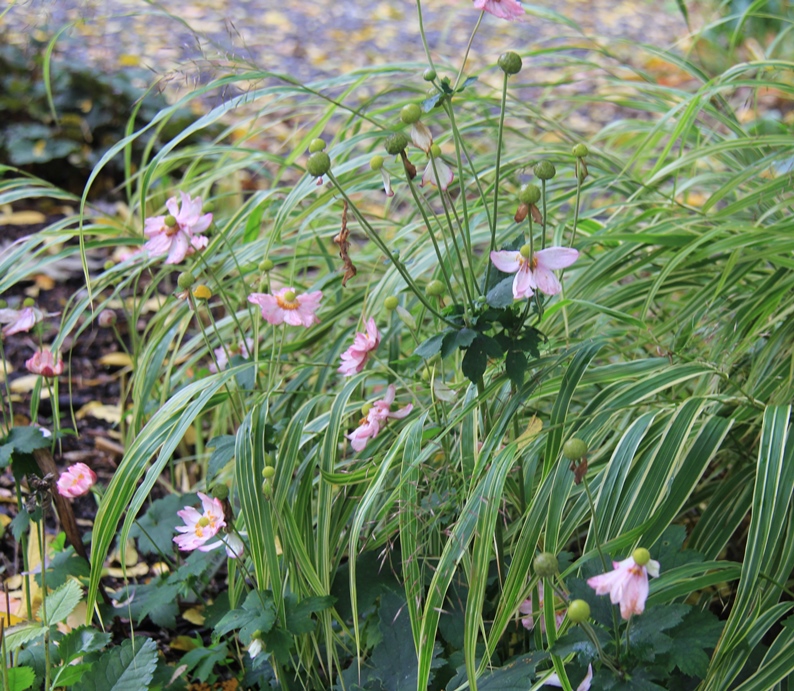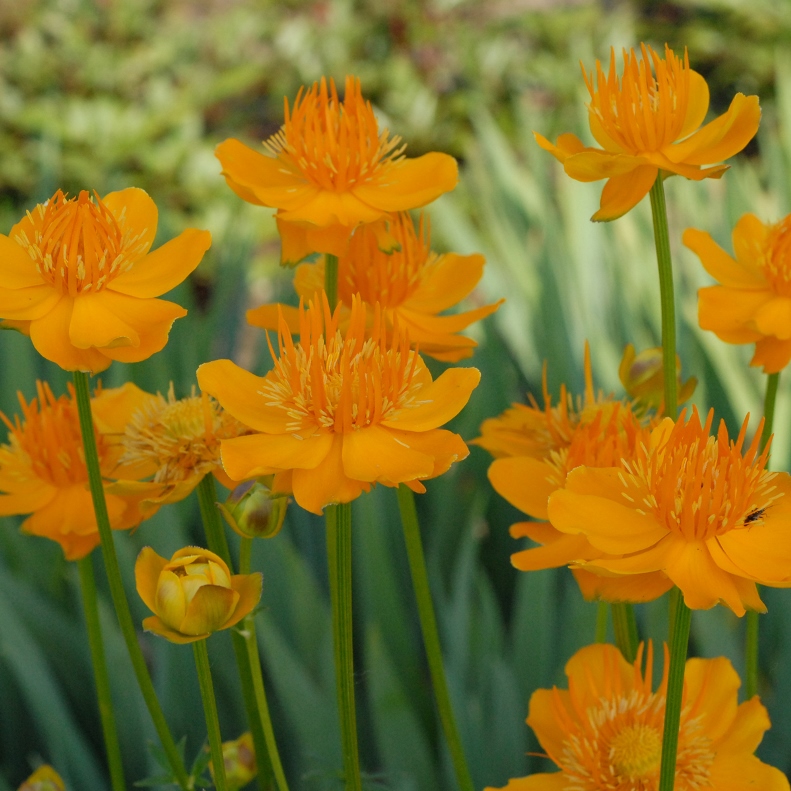Putting Your Garden to Bed for the Winter
When customers purchase a plant they frequently ask “What do I do with this plant in the fall?.” It is an easy question to answer if I only have to talk about that one plant. When faced with many different plants there is no simple answer that works for everything in your garden. If you check on Google there are lots of conflicting opinions about what to do in the fall with a garden.
The most contentious debate is about whether to cut a garden down in the fall or leave it until the spring.
Gardeners who do their cleanup in the fall argue that it is easier to weed and mulch once the garden is clean cut. It is also easier to cut the garden down when plant stems are still rigid. Removing the old foliage eliminates overwintering insects and potential diseases that are transmitted on foliage. You also avoid the potential problem of your garden starting to grow in the spring up through old foliage, or your spring bulbs spouting through a mess of leaves.
Gardeners who leave their gardens standing until the spring argue that, in a harsh winter with poor snow cover, plant survival will be better when leaves and old stems are left on the bed to provide insulation. The debris will also prevent plants from heaving and will stop the growth of plants too early in the season when they could be damaged by late frosts. Cutting down too early in the fall can also stress plants by forcing them to try to send up new growth. Leaving plants with seed heads, like coneflowers and ornamental grasses, provides food and shelter for wildlife. In addition many plants, especially ornamental grasses, are beautiful in the winter when their dried plumes stand out against the snow.
Here at the Nursery…
 Here at the nursery we have experimented over the years with both approaches and have ended up with a hybrid approach. We leave our ornamental grasses and all the perennials, like Asters, Turtlehead and Anemones that are still blooming, untouched. We cut down everything else being careful to pay attention to how close to the ground each plant should be cut. Plants that die to the ground and come back up from below ground each spring, like Phlox and Asters, are cut with about 15 centimeters of stem left to trap the snow. Plants that are very late to emerge in the spring like Butterfly Weed are marked with a tag so that we do not accidentally damage them when we cleaning up or weeding in the spring. Creeping Phlox, Lavender, Dianthus, and Coral Bells are evergreen and continue to grow in the spring from their old stems and crowns. We leave them alone and trim them back in the spring when we see where the new growth is emerging from. Herbaceous peonies are cut right down as are daylilies. We do not add the foliage of the peonies to the compost pile because foliar diseases in peonies are spread through leaves. Semi-evergreen perennials are those that do not die completely to the ground. Russian Sage is a good example of this. It will sprout from part way up the stems depending on how much snow cover there was over the past winter. Clematis are cut back in the spring because we find it easier to wait until they are sprouting and then trim them to strongly growing shoots.
Here at the nursery we have experimented over the years with both approaches and have ended up with a hybrid approach. We leave our ornamental grasses and all the perennials, like Asters, Turtlehead and Anemones that are still blooming, untouched. We cut down everything else being careful to pay attention to how close to the ground each plant should be cut. Plants that die to the ground and come back up from below ground each spring, like Phlox and Asters, are cut with about 15 centimeters of stem left to trap the snow. Plants that are very late to emerge in the spring like Butterfly Weed are marked with a tag so that we do not accidentally damage them when we cleaning up or weeding in the spring. Creeping Phlox, Lavender, Dianthus, and Coral Bells are evergreen and continue to grow in the spring from their old stems and crowns. We leave them alone and trim them back in the spring when we see where the new growth is emerging from. Herbaceous peonies are cut right down as are daylilies. We do not add the foliage of the peonies to the compost pile because foliar diseases in peonies are spread through leaves. Semi-evergreen perennials are those that do not die completely to the ground. Russian Sage is a good example of this. It will sprout from part way up the stems depending on how much snow cover there was over the past winter. Clematis are cut back in the spring because we find it easier to wait until they are sprouting and then trim them to strongly growing shoots.
 We do not cut anything back in our shade garden. Shade gardens are beautiful in the fall as the foliage goes through so many colour transitions. There is also likely to be a higher proportion of evergreen plants like Hellebores and Coral Bells in the shade garden. As the leaves fall we allow them to build up on the beds where they will insulate the plants over the winter. In the spring we simply remove all the fallen leaves and all the old foliage which is now mixed in with the leaves and compost it. Overwintering pests like slugs and snails are removed with the old foliage. We top up the mulch in the spring once the cleanup is complete.
We do not cut anything back in our shade garden. Shade gardens are beautiful in the fall as the foliage goes through so many colour transitions. There is also likely to be a higher proportion of evergreen plants like Hellebores and Coral Bells in the shade garden. As the leaves fall we allow them to build up on the beds where they will insulate the plants over the winter. In the spring we simply remove all the fallen leaves and all the old foliage which is now mixed in with the leaves and compost it. Overwintering pests like slugs and snails are removed with the old foliage. We top up the mulch in the spring once the cleanup is complete.
Pruning shrubs is another task that I am frequently asked about. At this stage in the season we don't do much pruning except to remove damaged branches. On new plantings of Hydrangeas, that do not yet have sturdy branches, we do remove the flower heads. As the plants age the branches are usually strong enough to support the old flower heads and they do add winter interest. We also make sure that any new plants have a good layer of mulch around them. Keep it away from the crowns of the perennials and the woody stems of shrubs and trees where it can cause winter rot. If planting has been done late in the season we will put evergreen branches over the plants in late November to catch the snow and add an extra layer of protection. Evergreens, like cedars, that are prone to splitting open from the snow can be wrapped with a light plastic mesh that is designed to hold the branches together. Young trees are protected up the trunk by a plastic cylinder or wrap that prevent rabbits and mouse from chewing the bark and girdling the tree.
Finally we take advantage of any sunny day right until freeze up to do as much weeding as we can. Fall weeding is one of the biggest time savers in the garden. Getting the weeds out before they have had six more months to establish is time well spent.
See you in the spring.